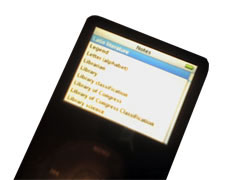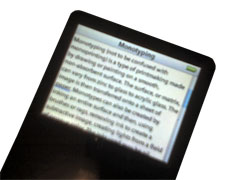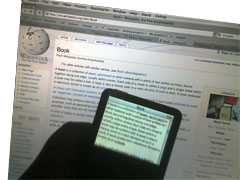I came home from my first year at college, reeling from culture shock unrecognized until much later, to a job at the local natural history museum. I was in charge of their live reptile exhibit, a perennial summer attraction in Rockford, Illinois. By the summer of 1996, my third year running it, the live reptile exhibit had lost much of its novelty with the locals; the occasional lost family from Wisconsin wandered in, and every once in a while a VBS class would come to admire God’s scaly creations, but most of the time I was left alone with the reptiles in the museum, an old Victorian mansion built during times when Rockford had a more promising future ahead than its rust belt present.
Running the live reptile exhibit was not the nicest job I’ve worked at – biting, for example, has not been so much of a concern in my subsequent employment. But the museum was a couple of blocks away from the Rockford Public Library, and I was well stocked with reading material. Even to one as oblivious as myself it was clear that Infinite Jest had been the big book of the previous year; there were cloud-covered posters in the windows of Wordsworth’s. Over the summer I could catch up, I thought, and I made my way through the library’s copy of the book, then Girl with Curious Hair, then The Broom of the System, which I may have had to buy.
I was at a point in my life when I was impressionable, and Wallace made an impression on me. Part of what bowled me over about Infinite Jest was the sense of place embedded in the book. It’s a book about Boston, where I’d just spent the year; I couldn’t claim to be an expert on the city, but there were places that I recognized in the book. I don’t know that to that point I’d read anything about a place I knew: nobody writes books about Midwestern cities and towns, or if they do, they do it in such a way as to make it clear that all those places are entirely interchangeable. (I later accused Ben Marcus of writing the most honest book yet about how it is to grow up in the Midwest in The Age of Wire and String; he told me he’d never been there, but it sounded nice. So it goes.)
But that sense of connection, especially in something someone was writing now: that was important. Reading Wallace then was like reading Salinger on my own during high school, that same shock of recognition. Wallace’s writing exuded possibility to me in a way that others’ hadn’t. The was the knowledge that the world couldn’t be wrapped up nicely with a bow – obvious now, and an idea older than Tristram Shandy, but one that was surprising to me then. Helen DeWitt noted a Wallace interview where he explains his endnotes:
There’s a way, it seems to me, that reality’s fractured right now, at least the reality that I live in. And the difficulty about . . . writing about that reality is that text is very linear and it’s very unified, and . . . I, anyway, am constantly on the lookout for ways to fracture the text that aren’t totally disorienting – I mean, you can take the lines and jumble them up and that’s nicely fractured, but nobody’s gonna read it.
As a reader, I hear an echo in this of a speech by an artist in Gaddis’s The Recognitions, a book I’d immerse myself in no small part because of a comparison in a blurb on the back of Infinite Jest:
. . . Why, all this around us is for people who can keep their balance only in the light, where they move as though nothing were fragile, nothing tempered by possibility, and all of a sudden bang! something breaks. Then you have to stop and put the pieces together again. But you never can put them back together quite the same way. You stop when you can and expose things, and leave them within reach, and others come on by themselves, and they break, and even then you may put the pieces aside just out of reach until you can bring them back and show them, put together slightly different, maybe a little more enduring, until you’ve broken it and picked up the pieces enough times, and you have the whole thing in all its dimensions. But the discipline, the detail, it’s just . . . sometimes the accumulation is too much to bear.
Others will find their own echoes. Thinking about Wallace for the past few days, I find myself thinking more about he affected me as a reader than about anything particular in his writing. In the years after reading Infinite Jest, I kept finding myself noticing things that Wallace had borrowed from others, which came almost as little winks – realizing that Johnny Gentle, Famous Crooner, had been appropriated almost wholesale from Ishmael Reed’s The Terrible Twos, recognizing with hindsight that the subplot about The Entertainment was a reworking of Joseph McElroy’s Lookout Cartridge, noticing, in short, that Wallace had been in every room I entered before me. Infinite Jest itself wasn’t really a book that I went back to, though I did eventually buy my own copy. I’d internalized it, and found the book had become a part of myself, something so basic that I found myself presuming that everyone interesting around me must have also read it. (This is a faulty assumption that would repeat: later, I’d catch myself thinking that everyone must have read Proust, that life without Proust was inconceivable.) I had been changed. Part of the reason I didn’t return to Infinite Jest was a fear that something so important wouldn’t be the same – returning to Salinger, I’d found his characters cloying and affected, coming off like the creations of a creepy old man. The books hadn’t changed, but I had.
For my money, Wallace’s masterpiece was “The Suffering Channel,” the last novella in Oblivion, which harrowingly explores a universal problem, “the subjective centrality of our own lives versus our awareness of its objective insignificance” through the lens of the celebrity-entertainment complex. (It is, for what it’s worth, a piece that I have been able to go back to repeatedly.) In a characteristic touch, a sinister production company has the Portuguese motto A consciência é o pesadelo da natureza. A character translates this as “consciousness is nature’s nightmare.” This is only half accurate, and I think it’s interesting what Wallace leaves out: the Portuguese consciência, like the Italian coscienza (famously used in the title of Svevo’s book), can mean both consciousness and conscience. Conscience is also nature’s nightmare; existence is always a moral issue, an idea that works its way through all of Wallace’s work.
I can’t claim that I knew Wallace – I met him in passing at a book signing, where he was kind and more generous than he needed to be. But certainly there’s a sense of kinship: to realize that you’re reading the same books that a writer once read. The book is Kafka’s axe to smash the frozen sea inside of us: to read can be to recognize that one is not alone in the world, to find yourself reflected in another’s language. The book Wallace signed for me I lost years ago, abandoned in storage above a carpet factory in Somerville; these things happen, and they’re not worth dwelling upon. But when I heard the news of Wallace’s death – late Saturday night, at the drunken end of an enjoyable wedding – it felt like I’d lost a part of myself. Part of that reaction is aleatory: Wallace’s writing found me at the right time. But it’s not entirely chance: so much of the power of language is its ability to transcend the body, to transcend the book.

 But a partial fulfillment for my desire to have a portable Wikipedia has come along: Matt Swann has
But a partial fulfillment for my desire to have a portable Wikipedia has come along: Matt Swann has  To my mind, browsing is one of the primary virtues of a print encyclopedia: the arbitrary logic of alphabetization makes for a serendipitous reading experience, and you often come away from a print encyclopedia having read something in a nearby article that you didn’t intend to read. This is something that’s generally lost with online reference works: links between articles are supposed to make logical sense. This is also a reflection of our reading behavior: if I search for “book” in Wikipedia, I’m probably looking for something in particular. If I’m interested in book conservation issues, I might click on the link for
To my mind, browsing is one of the primary virtues of a print encyclopedia: the arbitrary logic of alphabetization makes for a serendipitous reading experience, and you often come away from a print encyclopedia having read something in a nearby article that you didn’t intend to read. This is something that’s generally lost with online reference works: links between articles are supposed to make logical sense. This is also a reflection of our reading behavior: if I search for “book” in Wikipedia, I’m probably looking for something in particular. If I’m interested in book conservation issues, I might click on the link for  The experience of reading Wikipedia this way isn’t perfect: many links don’t work, and some articles seem to arbitrarily end, some in mid-sentence, some in mid-word. You also realize how many links in Wikipedia aren’t useful at all. If I’m interested in books as a concept, I’m probably not interested in
The experience of reading Wikipedia this way isn’t perfect: many links don’t work, and some articles seem to arbitrarily end, some in mid-sentence, some in mid-word. You also realize how many links in Wikipedia aren’t useful at all. If I’m interested in books as a concept, I’m probably not interested in 